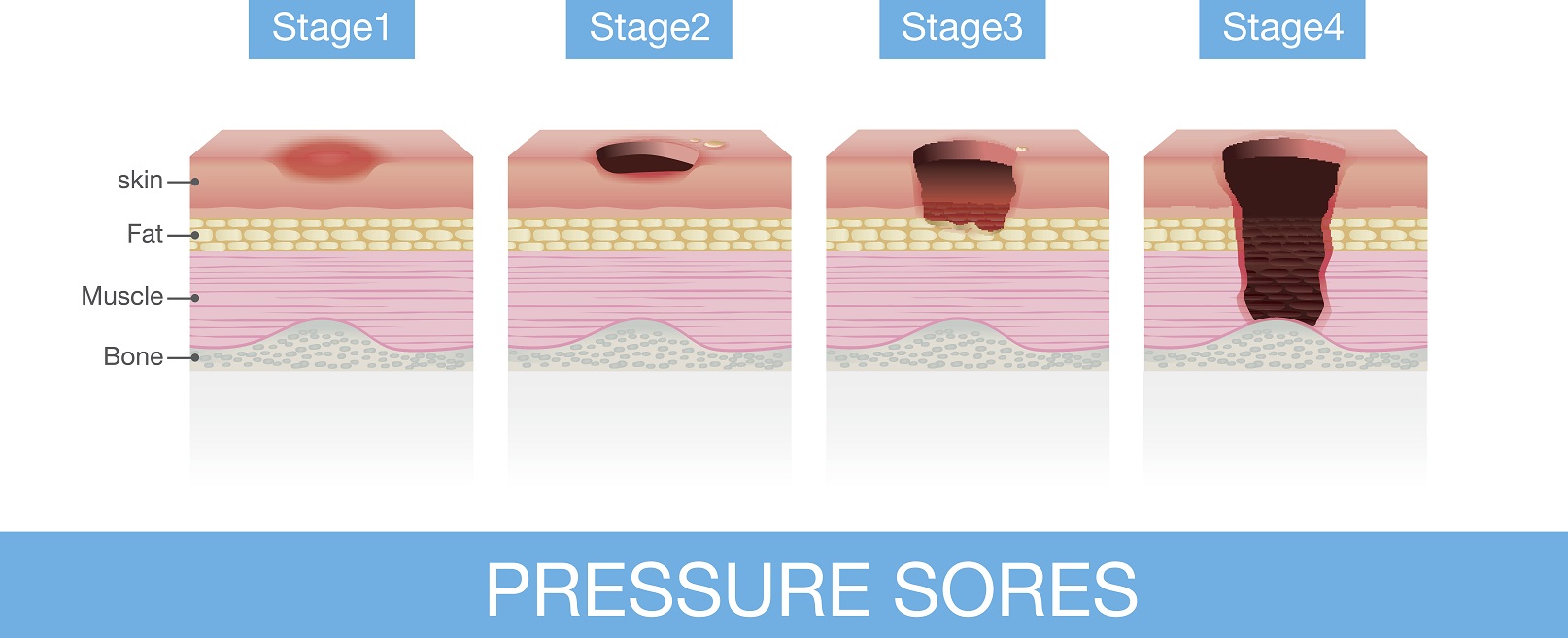Bedsores, Amputations
One of the most severe injuries elders can suffer is a bedsore. Such wounds are sometimes called pressure ulcers or decubitus sores; nurses may also refer to them as deep tissue injuries, DTIs, “unstageable” wounds or UTD. These skin wounds often occur on an elder’s backside (buttocks, coccyx or sacrum), hips (or ischium), heels or elbows, though they can develop in any part of an elder’s body on which they rest for too long. Bedsores are almost always preventable. Many factors lead to such sores, including unrelieved pressure on skin, uncleaned urine and feces, and poor nutrition and hydration. Care providers know what they must do to relieve pressure on an elder’s skin and keep it clean and dry, but often fail to do so.
Other kinds of skin sores (ischemic or vascular wounds, involving circulation and found on an elder’s feet or legs) can also be prevented, though they may require different types of care than bedsores. Some care providers refer to these sores as diabetic ulcers, chronic wounds or Charcot foot. Some do not even know such different kinds of wounds exist. Other providers may wrongly try convince patients or their families that such wounds are inevitable or cannot be healed. The truth is that such wounds can be prevented with good treatment, especially care to protect these residents’ feet and legs from pressure or trauma. Such wounds often lead to infections, gangrene, and finally to amputations.


